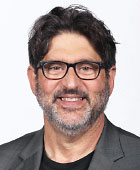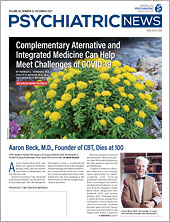Dr. Adelsheim would like to thank Kristoffer Strauss, M.D., a fellow in child and adolescent psychiatry at Stanford University School of Medicine, for his help in writing this article.
I never expected that trying to prevent suicide as a child psychiatrist would require begging a journalist not to include a photo in a newspaper or a graphic description in a story. Yet after four youth suicides had occurred over several months in one isolated New Mexico town, there I was on the phone with the writer from the Albuquerque Journal, pleading that such stories not be placed on the front page, not include a memorial photo, not share the means of death, and not use the word “commit” in describing the young person’s death by suicide. What led me to this advocacy was that I had been learning from colleagues working in suicide prevention on the national level about the potential for suicide contagion risk after stories about youth suicide appeared in the media.
Family and community members in this town were exhausted and frightened. Many publicly questioned if this cluster of youth losses would ever stop. I had previously worked with schools after other students had died by murder or accidental death, but this situation was different. With each new loss of young life, this tragedy seemed to take on increasing momentum. I realized my training had not prepared me for how to be most helpful in this situation—being helpful required me to learn about how to safely promote community engagement and action necessary to prevent more deaths by suicide.
Journalists hold tremendous power to shape the public discourse and response to youth suicides. The most devastating outcome is contagion. The inclusion of triggering details, attention-grabbing macabre headlines, and voyeuristic imagery can have a destructive influence on vulnerable individuals. This Albuquerque Journal reporter seemed to understand the power he held to prevent contagion, ultimately choosing to follow the “Recommendations for Reporting on Suicide” I had sent him. (The recommendations were developed by leading experts in suicide prevention and in collaboration with several international suicide prevention and public health organizations, schools of journalism, media organizations, key journalists, and Internet safety experts.)
I was briefly relieved, but new challenges arose as this cluster progressed, and new stories by other reporters were published. Halting the spread of the contagion ultimately included a coordinated effort with community partners. We developed media talking points, held press conferences, and guided members of the media to create “safer” stories to help bring this painful cluster to an end.
How the media report on suicide is a potential life-or-death matter, particularly for adolescents. When stories in the media deviate from recommended guidelines, the risk of adolescent suicide contagion demonstrably increases. Yet many journalists and editors are not yet aware of the recommendations, and some, unfortunately, choose not to follow them. For psychiatrists, it is a critical professional responsibility to educate our media partners about this risk and encourage journalists to follow the recommendations to help save lives.
In the time since that tragic initial cluster, I have had similar difficult conversations with other journalists across the country. While living in Palo Alto, Calif., I experienced the heartbreaking impact of the youth suicide clusters that struck the city in 2014 and 2015 and witnessed the community’s suffering. In 2016, staff from the Centers for Disease Control and Prevention (CDC) came to Santa Clara County (where Palo Alto is located) to review the local youth suicide data and make recommendations to decrease the risk of youth suicide. Their assessment included a review of whether media stories about the youth suicides followed the national media recommendations. The CDC found that, for the 240 articles reviewed, the mean number of negative characteristics (violating the guidelines) per article was 4.3/10, while the number of positive characteristics was 0.5/10 per article. The CDC report to Santa Clara County left many in the community with the desire to create an initiative to address media communication and suicide risk issues.
Through Stanford’s Media and Mental Health Initiative, we aim to partner with news, social, and entertainment media leaders to ensure young lives may be saved by appropriate reporting and depictions of youth suicide. Our effort also focuses on improving media education, communication, and collaboration around other mental health issues and the way they are reported in the media. In collaboration with Santa Clara County, the Stanford Initiative developed the TEMPOS Tool, which helps journalists assess the degree to which their stories meet reporting recommendations to minimize suicide risk.
At APA, the councils on Communications and Children, Adolescents, and Their Families are now developing a resource document referencing suicide and the media. This resource will serve as a guide to better understand our responsibilities as psychiatrists in shaping depictions of suicide in modern media, a critical step in supporting the well-being of our patients and families. It is incumbent on us to learn about the media recommendations; to ensure our public remarks are consistent with the recommendations; and, within our spheres of influence, to advocate that the media and others adhere to best practices. The lives of our youth depend on it. ■
Recommendations for Reporting on Suicide are posted
here.
The TEMPOS Tool is posted
here.
A report on a 2018 symposium on media reporting and youth suicide at the Microsoft campus in Sunnyvale, Calif., is posted
here.
Information about Good for Media, a peer-mentoring program for older teens about interacting with social media, is posted
here.
Information about “chatsafe: A Young Person’s Guide for Communicating Safely Online About Suicide” is posted
here.

